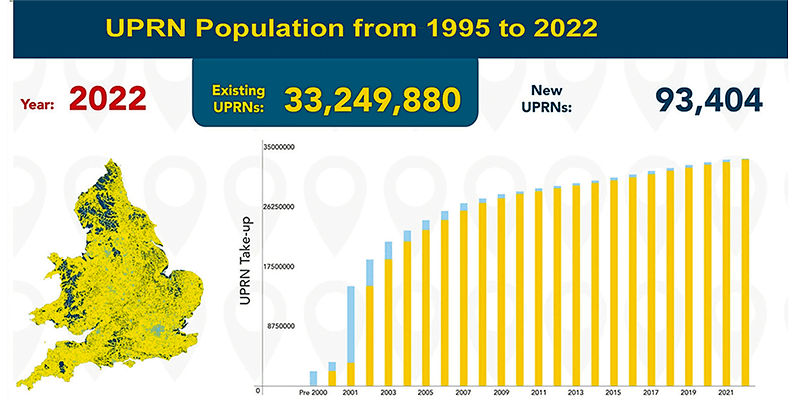In the first of a two-part article, Ordnance Survey’s Tony Mabey, explores whether Unique Property Reference Numbers (UPRNs) are an adequate replacement for postcodes

In the early 19th century, supplying a name, post town and county name was enough to help your mail reach its intended recipients. In 1959, with a much higher quantity of mail in circulation, the first postcodes were introduced on a trial basis in Norwich. Postcodes are still widely relied on today. However, there is room for a new level of information. Which is where Unique Property Reference Numbers (UPRNs) offer themselves as a candidate.
A UPRN serves as a unique identifier for an addressable location, whether that’s a building, bus stop or post box — think of it as a National Insurance number or car registration plate for a location. The value of the UPRN is becoming widely accepted, but the challenge is knowing how to use them and integrate them into multiple systems and datasets – this is what is holding customers back.
Common standard
A UPRN can be up to twelve digits, thereby applying a common standard that makes it possible to collate, share and connect data from various sources. This also helps overcome some of the challenges that exist with postcodes, such as them being attributed to inconsistently-sized geographic locations, and that they can change or be terminated. Postcodes also have limitations with multi-unit properties, such as apartments, since multiple homes will have pretty much the same address. Since address records vary in quality, it’s not uncommon for apartment numbers to be missed, causing inconsistency and confusion between data systems.
Finally, postcodes can only be attributed to buildings. However, it is helpful for local councils, contractors and suppliers to be able to locate various different assets, whether that’s to carry out ongoing maintenance or when building new infrastructure.
Despite postcodes being the widely accepted form of addressing, UPRNs aren’t new. The NHS has patient records linked to UPRNs, local authorities are using them and utilities companies rely on them for planning and when managing customer records.
Addressing the Switch
In telecoms, the introduction of One Touch Switching1 highlights the need for widespread use of UPRNs. From April 2023, customers that would like to switch network provider only need to contact their new provider, who is now responsible for contacting the incumbent supplier and arranging the switch. As you can imagine, it’s particularly important that address records across suppliers and consistent and reliable to ensure that this transition runs smoothly.
For gas and electricity suppliers in the UK, this is already the process. However, a recent Which? survey2 found that the most common switching problem reported by consumers was poor or confusing communication from the old supplier. Effective address management can definitely help counteract this, and using a dataset based on UPRNs is a great place to start.
In our next issue, Tony Mabey takes a closer look at the value of UPRNs as an enabler for utilities providers
1. https://www.ofcom.org.uk/news-...;
2. https://www.which.co.uk/news/a...;
Tony Mabey is Head of Sales at Ordnance Survey in Southampton. For more information on how Britain’s national mapping service can support utilities companies with address management, please visit www.ordnancesurvey.co.uk/custo...


